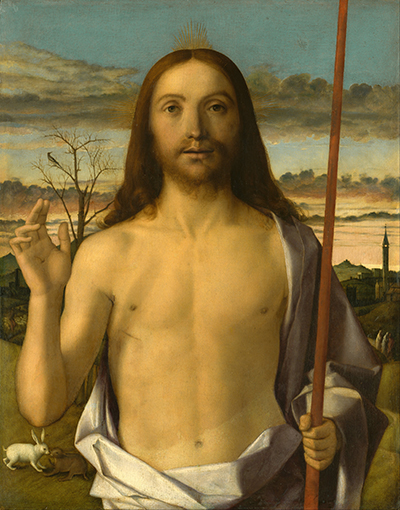Christ Blessing is amongst the most memorable paintings from Giovanni Bellini's extensive career which specialised in the Venetian approach to religious portraiture and landscape background scenes.
This portrait is unusual for Bellini in the way that Christ stands so close to the viewer, perhaps even within an arm's length. Whilst the imaginative sky depiction, typical of the artist, is present and correct as normal, its significance is far reduced in this painting because of the dominant size of the main focal point. Aside from this iconic figure, whose image dominated throughout the Renaissance and Baroque periods, the foreground features a small hare to the left hand side.
The background features a tall clock tower, perhaps jutting out from a small village or town. On the left hand side is a tree which holds no leaves, perhaps telling us of the location or season for this painting. There are then two wide strips of cloud which stretch across the canvas and break up the otherwise bright sky.
The original artwork, which dates at around the year 1500, can now be found at the Kimbell Art Museum in Fort Worth, Texas, USA. This item previously underwent restoration work in 1958 in Switzerland and its path from creation to the present day is particularly well documented, due to the prominence of Bellini's career in general. Whilst this artist depicted Christ on many, many occasions, this is one of the few which possesses a more upbeat atmosphere.
Italian art has long since been dominated by the key themes of Christian scripture, not just in the discipline of painting. Peruse the likes of Lorenzo Ghiberti, Filippo Brunelleschi and Donatello, for example, to see how sculpture and architecture also made use of the same themes, but adding their own creative ideas and techniques.




